市场资讯及洞察
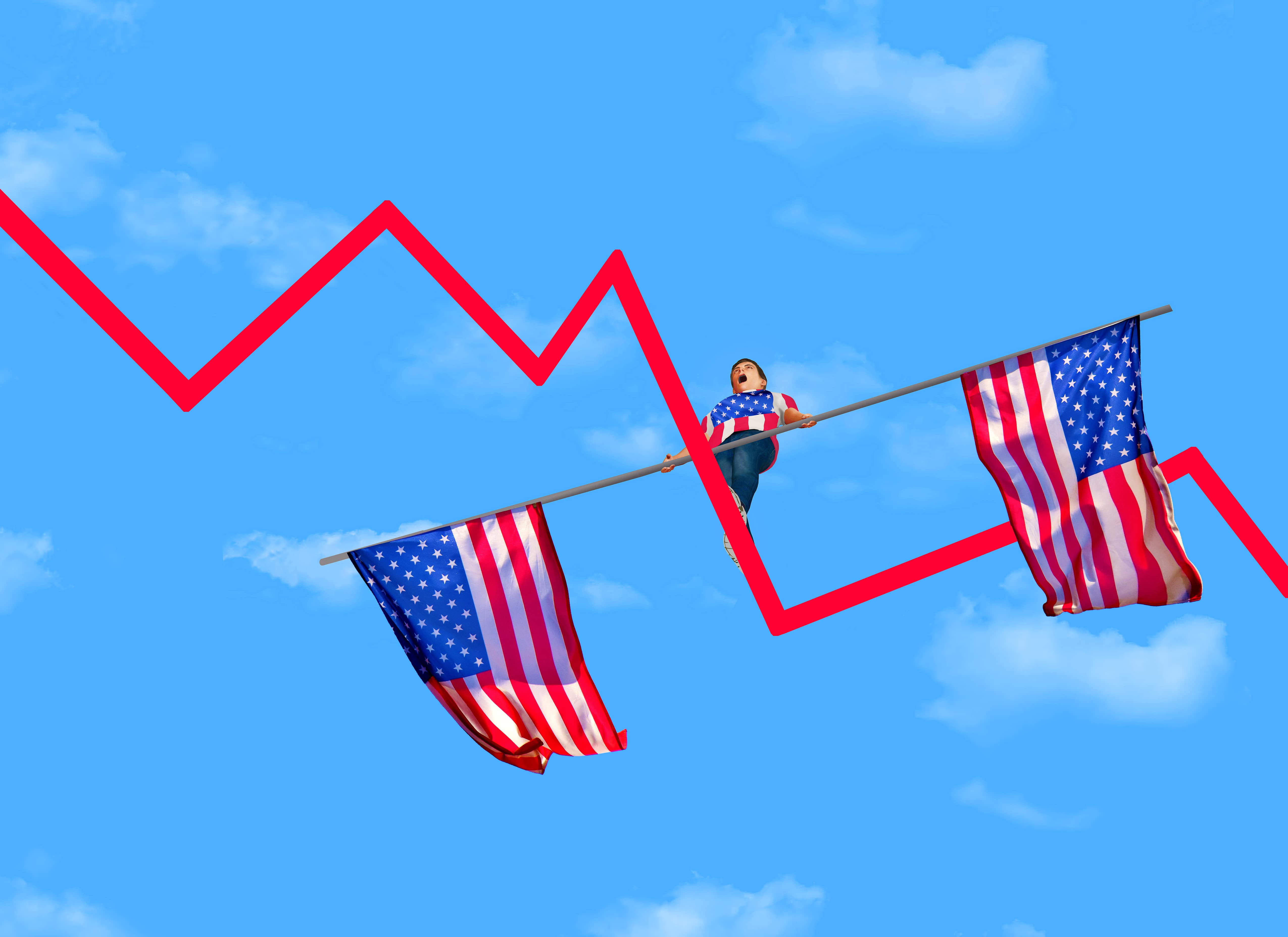
The longest government shutdown in US history has finally ended after 42 long days.
After a month and a half of political theatre, seven Democrats and one independent broke ranks and voted with Republicans to pass a stopgap measure. The Senate went 60-40, the House followed 222-209, and Trump signed it hours later.
The legislation includes three-year appropriations for the Agriculture Department, FDA, military construction, veterans affairs, and congressional operations, along with restoration of pay for federal workers and reversal of Trump administration layoffs through January.
However, the most contentious issue, healthcare subsidies, has been kicked down the road to a December Senate vote.
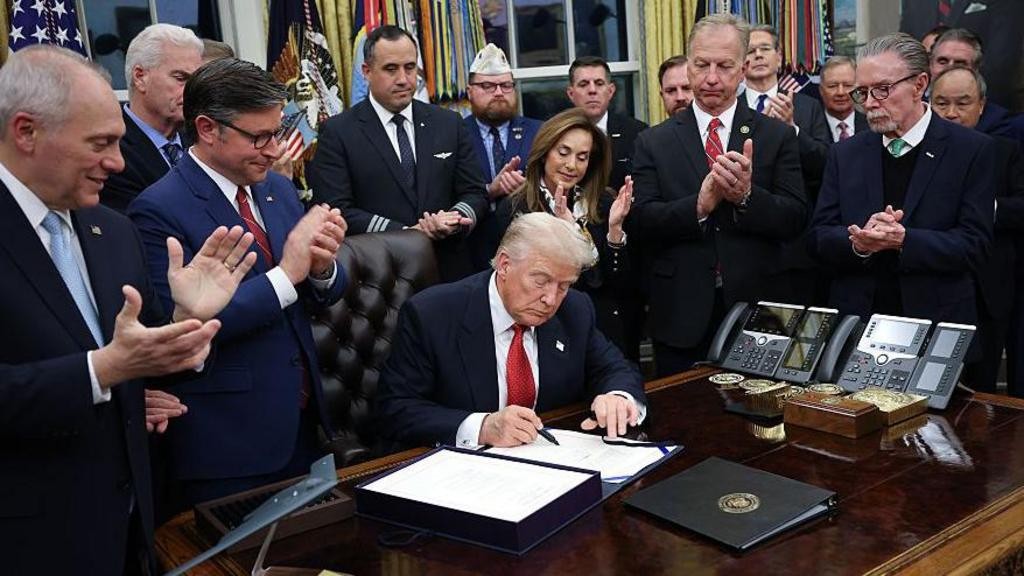
COVID-era ACA subsidies expire at year-end. When they do, premiums for the average subsidised household will more than double from $888 to $1,904 per year, with an estimated 3.8 million people losing coverage entirely.
If the December vote fails, which is likely considering how far apart the two parties are on the topic, we could see a new shutdown begin in January.
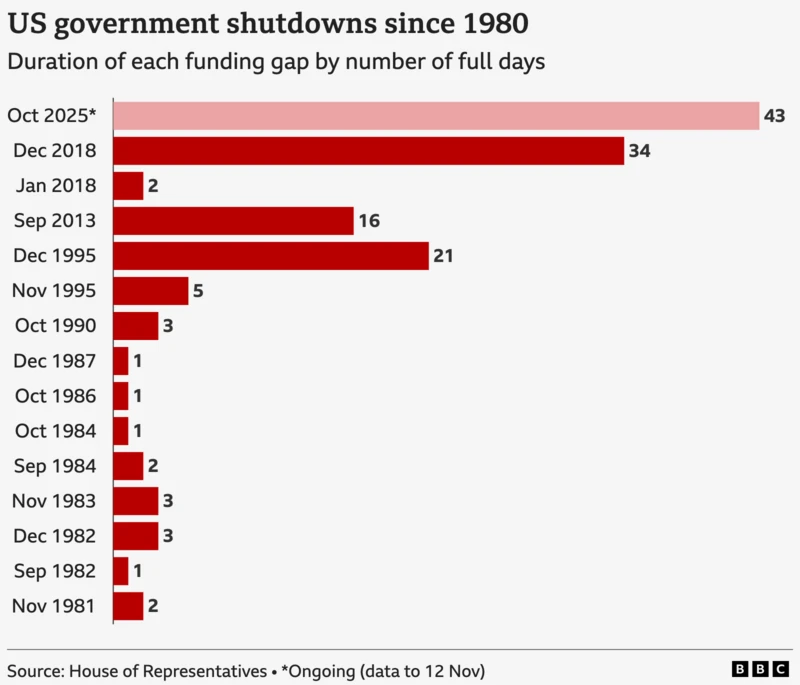
What Happens Next?
This Week:
- Federal employees return to work.
- Paychecks start flowing again.
- SNAP benefits get restored for 42 million people, though heating assistance won't come back for weeks.
- National parks reopen.
- Airports start to go back to normal.
December:
- Senate votes on healthcare subsidies. It will probably fail.
- Premium notices continue to be sent showing 2026 costs doubling.
January 30:
- Government funding expires.
- We do this whole thing over, except now the healthcare subsidies have already expired.
- If Republicans and Democrats remain divided on budget priorities, another shutdown will likely begin.
By the Numbers:
Over the past 42 days, approximately 750,000 federal workers have been furloughed. Another two million worked without pay. Over 42 million had their food assistance delayed. And the FAA cut flights by 10% because air traffic controllers stopped showing up to work.
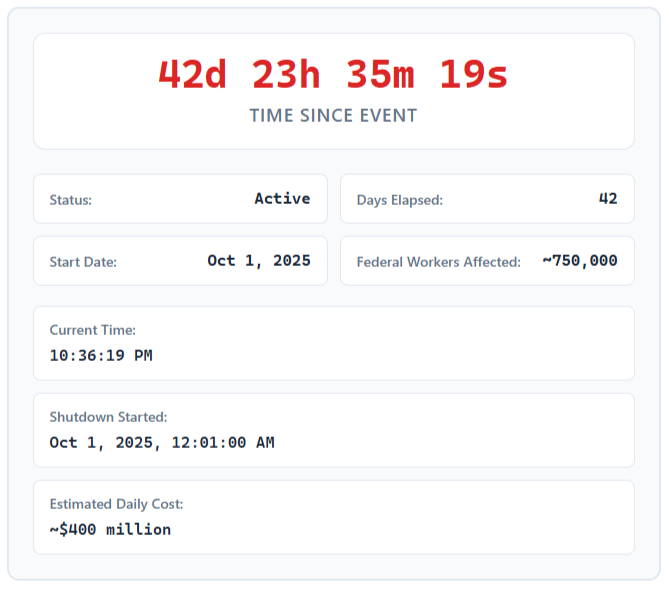
Further concern is the "data blackout" that has hampered Federal Reserve decision-making. Key economic indicators, including jobs reports, were suspended, leaving the Fed blind during an active rate-cutting cycle.
Meanwhile, separate analyses from Challenger, Gray & Christmas showed layoffs surged 183% in October, which would make it the worst October for jobs since 2003.
The Bottom Line
Today’s deal ended the shutdown, but it didn’t actually solve anything. The deal essentially kicks the can down the road to January while leaving the healthcare crisis unresolved.
With both parties divided on healthcare and spending priorities, and Trump lacking a comprehensive plan to address rising premiums and high deductibles, a resolution in the December vote seems unlikely.
If no compromise is accepted by the time Government funding expires on January 30, another shutdown is almost inevitable.
Impact of Australian Jobs Reports and U.S. Shutdown End on the Aussie


As PBOC slashed its Reserve Requirement Ratio (RRR) for large institutions and smaller banks, investors are trying to understand the rationale and implications of this action because it is the fourth cut for the year. The cut will inject billions of Yuan into the banking system. In doing so, it signals that China is worried about its slowing economy and the effects of trade tariffs.
China is facing too many headwinds at once and is trying to take pre-emptive steps to prevent investors from pulling their money out of China. The central bank announced the RRR cut after a week-long which caused Chinese markets to tumble as investors have to digest a whole week of news in one single day. CHINESE STOCK MARKETS Chinese stock markets fell more than 3.7% on Monday as a combination of proactive measures from the PBOC to ease pressure on banks and the ongoing trade tensions between the US and China did little to reassure the markets.
The decline shows that the actions did not diminish the anguish, and concerns investors have on the broader Chinese economy. The negative sentiment has also spilled to the Asian, European and US markets at the beginning of the week. The Chinese stocks have partially recovered compared to Monday, but trading in the equity markets remain wobbly.
Adding to the current uncertainties, geopolitical risks, rising US interest rates, Treasury yields and US debt deficit are also weighing on the markets. As investors reassess the growth expectations due to trade tariffs, they will most likely pay particular attention to the rising yields which could be the challenge in the next couple of weeks for the equity markets. CHINESE YUAN The move accentuated the bearish momentum of the Yuan.
Beijing struggled to keep its currency afloat as it has weakened beyond the 6.93 handle. Most Asian currencies were also weaker on Monday because of the RRR cut and the rising US dollar. As the pair moves toward the 7.00 mark, the risks that emerging markets will go down with the fall in the Yuan increases.
While trade uncertainties is a major contributing factor in the depreciation of the Yuan, the currency is battling a lot of headwinds at once. Traders will likely keep a close watch on the key psychological level of 7.


US Government Shutdown President Trump has agreed to temporarily end the shutdown, putting an end to the most extended shutdown in US history. The three-week pause initially lifted investor sentiment and helped Asian stocks push higher on Monday’s open. It is reported that the shutdown cost the economy $11 billion, which includes approximately $3 billion of permanent loss.
Economists are predicting a drop of 0.2% in GDP for the first quarter of 2019. There are still some negative effects that may not immediately be identified or quantified at this stage. Despite the temporary halt, there are a number of reports such as new home sales, construction spending, durable goods and factory orders are being postponed.
The release of fourth-quarter GDP data which was initially scheduled for Wednesday will be delayed. However, the monthly non-farm payrolls reports will still be issued on Friday. The data void has made it difficult for traders and the US Federal Reserve to assess the health of the US economy.
The FOMC will hold their first meeting on Wednesday, and the lack of economic reports can compromise their outlook. US-China Trade Talks The trade talks resume this week amid the chaos surrounding the criminal charges against Huawei’s CFO. Both parties are facing increasing pressure to come to a trade deal as China’s economy is taking a hit and President Trump need to deliver some of its election promises especially as the funding of the Wall is on hold.
Investors will probably monitor any information/headlines emerging from the high-level groups of delegations. The willingness to engage has increased the chances of some sort of a deal, but it is unlikely to be a quick- fix. Since the start of the year, there is more optimism on the trade talks, but the reality in the state of negotiations are still far from conclusive given the looming deadline.
Earnings Season It will be a busy week with more than 300 companies reporting earnings. After Caterpillar missed estimates for the first time in a decade and Nvidia downgraded revenue forecasts, investors appear to be on edge as it has exacerbated fears of slow global growth. Apple will release earnings on Tuesday while Boeing, Microsoft and Visa earnings are due on Wednesday.


Theresa May suffered the worst defeat in recent times in British history. The House has spoken, and Theresa May stated that the government will listen. “It is clear that the House does not support this deal, but tonight’s vote tells us nothing about what it does support.” It will be a big challenge for her to negotiate a withdrawal agreement with the European Union if the UK seems confused about what they want themselves. What’s Next? is the number one question emerging after the big defeat.
Labour’s Leader, Jeremy Corbyn has tabled the motion of No-Confidence. Today will be another busy day for Britain: 1:00 PM (London time)– Jeremy Corbyn will open the debate and Theresa May will debate the motion. 7:00 PM (London time) – The Vote will take place. 7:15 PM (London time) – The Result will be out. Out of 650 MPs, Theresa May will require 318 votes to win.
The result of the no-confidence vote will determine the next course of action: At this stage, we believe that the government have higher chances of surviving the vote. The conservative rebels do not want a change of government but want a change of policy rather. It is unlikely that her Conservative Party will risk Labour winning and Jeremy Corbyn becoming Prime Minister.
In the case, the Labour Party fails to trigger an election, they will attempt to seek a second referendum as discussed in my previous article. Tonight’s No confidence vote will provide more clarity on the next course of action. In the meantime, we continue to expect wild swings in GBP pairs.
The Pound pumped back the heavy losses made against major currencies after the vote, and we believe such volatility is normal given the circumstances and uncertainties grasping the markets around the next steps of Brexit. However, now that the likelihood of a no-deal Brexit has reduced, giving room to more alternative plans, the direction of the Pound appears less skewed to the downside. A look at the long Doji candle on the daily chart of the GBPUSD pair shows that bulls are providing strong support to the pair.
GBPUSD Source: GO MT4


If we could describe the year 2019 in one word, we believe uncertainty says it all. The world entered 2019 with a high level of ambiguity and is poised to finish the year with the same extent of uncertainties. The Global Economic Policy Uncertainty Index which is a GDP-weighted average of national EPU indices for 20 countries has remained in elevated levels in 2019.
Each national EPU index reflects the relative frequency of own-country newspaper articles that contain a trio of terms pertaining to the: Economy ( E ) Policy ( P ) Uncertainty ( U ) In simple words, the frequency at which newspapers cite “uncertainty” in relation to economic policy is high. Source: Bloomberg Terminal Sino-American Trade War We have seen a de-escalation of trade tensions between the world’s two largest economies towards the end of the year. Investors grew hopeful that both countries will sign a partial trade deal.
After weeks of speculations regarding the partial trade deal, “ a deal in principle” made headlines driving major US equity benchmarks to new highs. The optimistic statements in the US were not reciprocated to the same extent in China. It was a much muted and cautious response.
Any commitment and compliance from China remain murky. The Trade Truce is being handed over to the financial markets like a Christmas gift. The real surprise will be unwrapping the gift and taking note of the details of the agreement.
At the moment, vague promises and speculations are creating a “fragile” positive environment. Uncertainties Persist! Phase One will ease but not eliminate uncertainties as Phase Two will handle challenging issues such as IT, Artificial Intelligence and cybersecurity and other hi-tech areas.
At CNBC’s Hadley Gamble at the Doha Forum, US Treasury Secretary Steven Mnuchin’s comments on Phase two was not inspiring: “Phase Two maybe 2a, 2b, 2c, we’ll see….” Populism and Globalisation The growing prospect of populism comes with an array of uncertainties which is hard to ignore. President Trump’s presidency and Brexit are the bellwether of populism and have played a significant role in the recent volatility in the markets. President Donald Trump The Western political space is changing and is disrupting globalisation.
The US President adopted a hard-line approach on not just trade, but also on migration and capital flows. The US has launched a trade war against major countries, some of which have been key allies of the US. Brexit Brexit Europe and the United Kingdom are practically on hold due to Brexit.
The echoes of populism have threatened the existence of the bloc and have crippled its economy. Following the referendum for the UK to leave the European Union, the bloc’s members like Germany, Italy and France were also hit by several anti-establishment groups. Hong Kong Protests Slowing Global Growth Manufacturing Contraction The manufacturing sector has been one of the main factors that had triggered concerns of a recession.
In the US, the two widely- used indicators of the performance of the manufacturing industry are ISM and IHS Markit. Both surveys consist of a diffusion that summarises whether the market conditions are expanding, staying the same, or contracting. Over the months, investors received mixed signals from both surveys.
The divergence could partially be explained by the differences in the methodology used. Yet, the contrasting signals were noteworthy for investors. As the year draws to an end, the preliminary Markit Manufacturing PMI figures for the US shows that it will be another month of steady growth fuelling hopes of a brighter start for 2020.
On the other side, the ISM shows that the manufacturing industry has been softening for the past eight months and contracted for the fourth straight months at a faster rate. Source: Institute for Supply Management Interest Rates and Central Banks Slowing global growth and recession fears have forced major central banks to cut interest rates to record lows. The Reserve Bank of New Zealand was among the first major central banker to commence a major easing cycle.
After some resistance, the Fed and other central bankers has also cut their interest rates. The European Central Bank have even resumed the controversial quantitative easing to stimulate its economy. Towards the end of the year, the concerns of slowing global growth have receded as global economic data has shown some signs that the downturn may be bottoming out.
Central banks have paused the easing policies and appear less dovish when setting policies for 2020. Stock Markets A look at the performance of major global equity indices does not reflect the angst seen during the year. As of writing, the stock market is set to close the year on a strong note.
Two Digits Gains and Record Highs! Chinese stocks have recovered strongly over the month. Despite a trade war, sanctions against public tech companies and slower economic growth, Chinese shares rallied. buoyed mainly by renewed optimism on the trade front.
Hong Kong Shares took a beating as months of protests have discouraged investment and compromised the country’s position as a financial hub. The US has also passed the bipartisan Hong Kong Human Rights and Democracy Act that could strip the city of its special trading status following annual reviews of its democratic freedoms. As of writing, the Hang Seng index was up by only 7%.
FTSE100 was primarily driven by Brexit-related events. Towards the end of the year, the index has been trading sideways, but the majority win by the Conservative Party has pushed UK stocks higher. However, the possibility of a hard-Brexit has tamed the rally.
World Equity Indices (% Change) Source: Bloomberg Terminal As the year comes to an end, we are seeing the dominant risks – trade and Brexit that have rattled the markets over the months moving in a positive direction. Energy Sector The energy landscape is changing over the increased concerns on climate change. The rise of renewables is altering the dynamics of the industry.
The “ Greta effect ” and various extreme weather conditions are constant reminders that the climate crisis is not going away and governments will be forced to adjust policies to tackle climate change. As we move into a new decade, we see that the energy sector has been left behind. Looking at the different sector of the S&P500, energy emerged as the worst performer.
The oil and gas industry is facing a supply glut and decreasing demand at the same time. Saudi Aramco’s IPO which is one of the biggest IPO was launched as a local affair reiterating the struggle to entice international investors at a time where the oil market is facing structural headwinds. The deeper production cuts by the OPEC members and allies and less geopolitical tensions are currently supporting a fragile oil market. 2020 will be the confirmation of a new era… Investors are navigating in an environment with historically high levels of policy uncertainty.
As we step into a new decade, market participants will be familiar with: A new world of higher tariffs Peak globalisation Climate change A probable tech war between the US and China Commodities gluts Historically low levels of interest rates. 2020 is probably not the year for a recession. In the last two months, investors have priced-out recessions risks. The optimism is mostly based on positive trade-related comments, central banks intervention and expectations of steady interest rate in 2020.
Still, Uncertainties Remain and 2020 could be as volatile as 2019! About GO Markets GO Markets was established in Australia in 2006 as a provider of online CFD trading services. For over a decade we have positioned ourselves as a firmly trusted and leading global regulated CFD provider.
Traders can access hundreds of CFD instruments including Forex, Shares, Indices and Commodities. Follow us and keep up to date with the latest market news and analysis.


The start of the year was marred by the escalating tensions between the US and Iran while extreme weather conditions across the global triggered fierce debates about climate change. What do we know so far about the tensions between Iran and the US? Iranian-backed militia killed an American Defense Contractor The US retaliated with missile strikes The American Embassy in Baghdad was attacked US airstrikes killed top Iranian military official, General Qassem Soleimani Iran responded by launching missile strikes at two bases hosting U.S. forces in Iraq As the world witnesses the rising tensions between the US and Iran, and a uniting Iran over the assassination of one of the most influential and powerful men, the downing of Ukraine International Airlines flight PS752 has caused international outrage and brought internal division within Iran.
Beyond Economic War The existential conflict between the US and Iran moved beyond an economic war. In 2019, the US announced further economic sanctions on Iran, which has put Iran into a deeper recession. As a significant buyer of crude from Iran, China sees the situation as an impediment that can hurt its economy.
The Iran risks may, therefore, overshadow the trade deal. Investors have already priced in some extent of the risks associated with Iran since President Trump pulled out of the 2015 nuclear deal and started to impose sanctions. Even though the headlines brought Iran back on the geopolitical risks radar and caused a spike in volatility, we do not see the conflict changing the investment landscape at this stage.
Climate Change 2020 is set to be the confirmation of a new era for climate change. As we entered a new decade, the extreme weather conditions around the world have forced leaders of many countries to reassess their actions over climate change and transform the global energy system. In Australia, the unprecedented and raging bushfires across the country act as a warning to the world and has even challenged a reluctant Prime Minister to take more action Energy Sector Oil prices experienced their largest weekly drop since July 2019 despite the tensions in the Middle East.
Coincidently, markets were hit by two contradictory themes for the oil and gas industry: Iran Risks and Climate Change. Source: Bloomberg Terminal > It should be highlighted that the energy sector emerged as the worst-performing sector of S&P500 in the last decade. Investors are stepping into 2020 being accustomed to the global oil glut and the gradual shift in the oil and gas industry.
Iran risks fuelled expectations of a reduction in supply while the “green” shift lowers demand expectations. Eyes are now on the US-China trade deal! Stock Markets Despite an erratic few weeks of trading, global stock markets have performed quite well: Major equity benchmarks traded at a record high US stock indices are trading higher by 1% and above Most European Bourses are also experiencing similar gains Australian benchmark outshines its peers with more than 4% gain FTSE100 is lagging slightly behind with 1% gain Brexit will remain the dominant factor for the UK markets.
Despite the volatile year 2019, the FTSE100 posted two-digit gains. The Tory win had pushed the index above the 7,500 mark. Looking ahead, the Footsie is expected to rebound and investors are eyeing the next target at 8,000 level for 2020.
However, given that a large amount of earnings of the index is derived from overseas, an appreciation of the Sterling may hinder the performance of the FTSE100 to play catch up with its global peers. Source: Bloomberg Are Re-Pricing Risks Required? The killing of a key commander took the markets by surprise.
Heightened geopolitical risks have somehow become the new normal and unless there is any serious escalation, medium to long-term effect on the markets would be limited. In a new world of higher tariffs, de-globalisation, and historic low levels of interest rates, the most significant risks for 2020 are: Trade deal; and Central Banks. About GO Markets GO Markets was established in Australia in 2006 as a provider of online CFD trading services.
For over a decade we have positioned ourselves as a firmly trusted and leading global regulated CFD provider. Traders can access hundreds of CFD instruments including Forex, Shares, Indices and Commodities. Follow us and keep up to date with the latest market news and analysis.


热门话题近期AI 人工智能的话题火热,在Chatgpt 4上线后,人们逐渐发现,这一代的AI开始出现了逻辑性甚至是一些的推理性。那么今天就和大家聊一聊AI的摩尔定律和目前发展的情况。
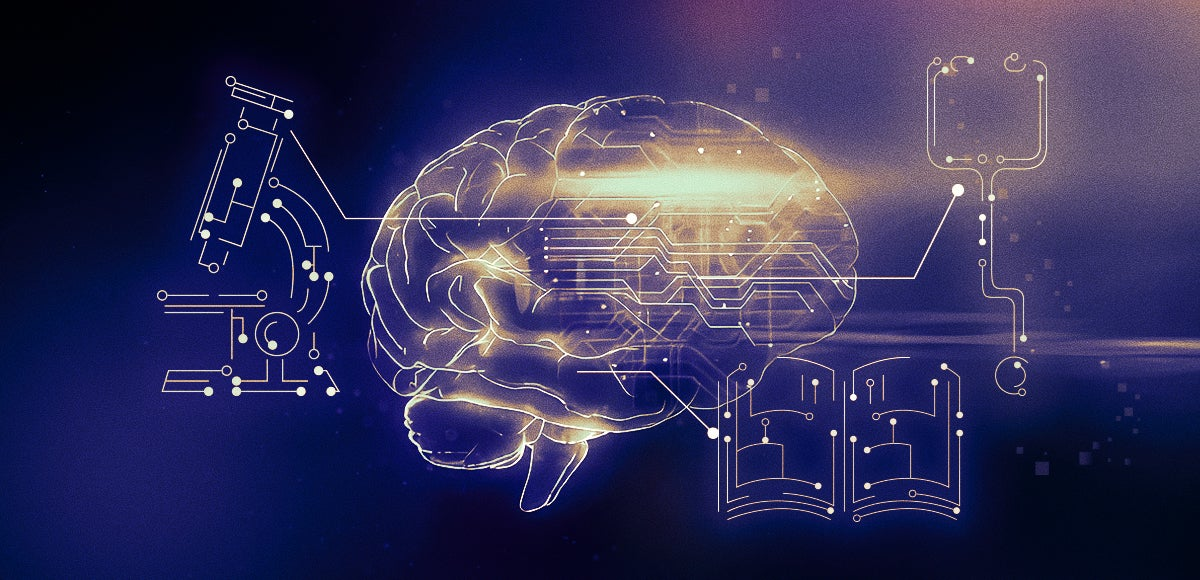
首先和大家简单阐述一下什么是摩尔定律。摩尔定律(Moore's Law)是在1965年由英特尔公司的联合创始人戈登·摩尔提出的观察结果,它预测了半导体集成电路的性能每18到24个月就会翻倍。这一预测在过去几十年中持续成立,使得计算机硬件性能以惊人的速度增长。那么在今年已经开始出现3nm的芯片消息,预计在明年年初将会投入使用,那么对标2020年底的5nm芯片,时间也正好对的上。那么和硬件能力息息相关的AI是不是也会完全遵守摩尔定律呢?这个问题目前来说众说纷纭。比较火热的就是之前OpenAI的 CEO Sam Altman在社交媒体上发布的一段话,AI的摩尔定律将要出现,称全球人工智能运算量每隔18个月翻一番。当然,以个人理性的判断来说,这个具体的数字并不是非常绝对的,因为AI的进步不仅仅只是取决于硬件或者说算力的进步,还是会包括但不限于算法的改进、数据可用性以及计算资源可用性的增加。这些因素都在推动AI的发展,但它们并不受摩尔定律的直接影响。因此,想要描述其AI的进步,可能会考虑的是数据的增长(比如网络数据的指数增长)和算法的改进(比如深度学习等技术的发展)。那么我们由此来简单剖析一下目前的AI训练的情况如何。在前几年,AI的训练还是会花费几天甚至是数周的时间,于是在数十亿的投资之后,各种新兴计算公司接踵而至,包括其中包括Cerebras Systems、Graphcore、Habana Labs以及SambaNova Systems等。此外,Google、Intel、Nvidia等已经建立的公司也进行了类似规模的内部投资。近期新版的MLPerf训练基准测试结果的出炉后,证明了这些投资是很值得的。自从MLPerf基准测试开始以来,AI训练性能的提升“显著超过了摩尔定律”,首先解释下什么是MLPerf。MLPerf是一个行业标准的基准测试,旨在为机器学习(Machine Learning)硬件、软件和服务提供公正、可比较的性能评估。

MLPerf包含了多个任务子类别,从计算机视觉、自然语言处理到推荐系统等,它涵盖了各种常见的机器学习模型和应用场景。MLPerf有两个主要类别的基准测试:训练(Training)和推断(Inference)。MLPerf Training基准测试专注于衡量机器学习模型的训练性能。这包括衡量所需的时间和计算资源来训练一个模型达到预定的质量标准。这个基准测试在多种模型和任务上进行,如图像分类、对象检测、语言模型训练等。说回MLperf测试结果,在之前2021年测试版本中,芯片的迭代和早期对比有两倍的提升。但是软件的改进加上计算器处理架构的进步,速度的提升来到了6-11倍。根据Nvidia的说法,使用A100 GPUs的系统性能在过去的18个月中已经增加了5倍以上,近2.5年增长了近7倍,而在最初的MLPerf基准测试三年前,性能已经增加了20倍。有数据可见,AI的发展速度其实和诸多因素有着关联,然后再近18个月来,其提升速度远超于之前的好几年。
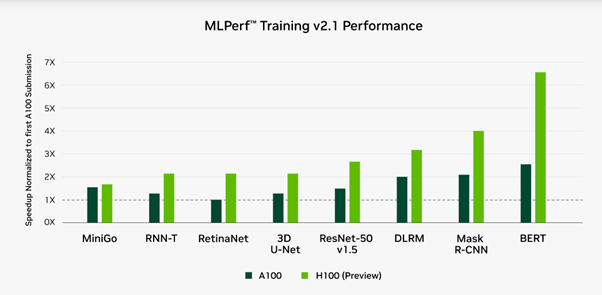
(Source:NVIDIA)在今年年初,英伟达和CEO老黄表示,AI的发展可以克服摩尔定律的逐渐消亡。人工智能的进步可以推动芯片等的性能的提升。老黄解释道:目前的AI行业已经经历了几个重要的发展阶段。第一个阶段是开发人工智能所需的芯片、软件库和系统。这一阶段从2017年之后,发展快到难以想象。第二个阶段包括对感知(如视觉和语音识别)的突破。目前这个阶段已经趋于成熟,感知也开始走向拟人化。目前的阶段是建立智能能力,比如理解世界发生的事情。有逻辑性的推测,对已发生事物的分析和未来的预测。最后一个阶段将是AI软件和现实世界结合起来,用于诸如工厂自动化等事物。日前AI发展的速度远超我们大家的想象,像英伟达,Intel,AMD,Google,微软,亚马逊等占据巨大数据资源加上先进半导体科技技术的公司绝对是关注的重点。像英伟达在近6个月上涨了接近83%,AMD也有39%的上涨。

笔者曾在去年有写过,在半导体的争端之下,各个大型的半导体公司将会有不俗的发展,而今年的赛道不仅仅只是半导体等硬件,或是软件端的竞争,AI人工智能也加入了战局,传统型思维很有可能在近年被打破,无论是生活还是投资也将可能面临大的变革,我们拭目以待。免责声明:GO Markets分析师或外部发言人提供的信息基于其独立分析或个人经验。所表达的观点或交易风格仅代表其个人;并不代表GO Markets的观点或立场。联系方式:墨尔本 03 8658 0603悉尼 02 9188 0418中国地区(中文) 400 120 8537中国地区(英文) +248 4 671 903作者:Neo Yuan | GO Markets 分析师

